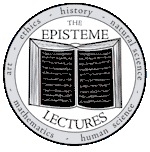One interesting idea introduced in Cpt. Perkins' posts was the intentionality of art and its implications. What effects are created by art created with intention that are absent in art unintentionally? To frame the question in concrete terms, let's consider two objects: Horse Sculpture and Horse Rock. Horse Sculpture was created by a respected artist who carved every last detail with great planning and foresight as to their implications. Horse Rock was a naturally occurring phenomenon created randomly by erosion and weathering. The two are identical.
Is Horse Sculpture more powerful (in terms of effect on the viewer) than Horse Rock?
I say yes, it is, because the artist's intentions and reasons create a transactional (woot Lyday) relationship with the viewer. The Horse Sculpture serves as a means of communication of the artist's ideas to the viewer.
Horse Sculpture accomplishes more than simply communication. This communication inspires thought and "a pause". But as one passes Horse Sculpture, it may as well be Horse Rock. The inspiration and pause of Horse Sculpture are indistinguishable from those caused by Horse Rock. However, the communication is not part of the experience of viewing Horse Rock.
This relates very well to the scenario of observing the architecture of Columbus as a resident. If simply observed, the architecture may as well be naturally occurring, because without any information about its creator, communication is not established. Yet if the same building is observed with respect to its creator's intention in making it, communication is established and the understanding between sculptor and viewer is strengthened.
Note: I use "intentionality" in reference to what the architect/artist intended in the creation of the building/piece. Mr. P uses "intentionality" in reference to city planning, as well as creation of individual structures. Intentionality takes a role in city planning as to the arrangement of the buildings, but also in a different sense as "why bother".
To be edited, this is a bit jumbled.
Tuesday, September 25, 2007
Subscribe to:
Post Comments (Atom)



4 comments:
Ben writes,
If simply observed, the architecture may as well be naturally occurring, because without any information about its creator, communication is not established. Yet if the same building is observed with respect to its creator's intention in making it, communication is established and the understanding between sculptor and viewer is strengthened.
This can open up whole realm of discussion. You say that Horse Rock was formed by the natural phenomena of erosion and weathering. Wouldn't one of the millions of people who believe in a supreme deity argue that these are the tools of the divine artist? And wouldn't those who believe that God has revealed information about Himself and His creation further argue that Horse Rock is as capable of communication as Horse Sculpture?
Both of you have a good point about communication though art either "intentionally" or "unintentionally". However, I personally believe that if one cannot gain communication without knowing the artist or the artist's style, than that art doesn't mean much. Without communication the art can mean nothing, because art is only art if there is someone who can gain something from it, no matter how small that something is.
Jade writes,
However, I personally believe that if one cannot gain communication without knowing the artist or the artist's style, than that art doesn't mean much.
Many people make this same comment. I am curious, though... Why do we require art to communicate without having anyone teach us about the details, the background, etc., when we do not require this of an area like physics? For example, no one expects to walk up to a physics equation and, with no understanding of physics, comprehend what the equation communicates. Yet we seem to expect to walk up to a piece of art and somehow gain understanding, even if we know nothing about it.
Art is so basic that it goes back to times before written or spoken language. I believe that art had to be a communication link, a link that leads to speech, which leads to more complicated thinking, that finally creates phyisic. In short, I believe that with out the first the end could never happen, because I believe that art created deeper thinking even in its simplicity.
Post a Comment